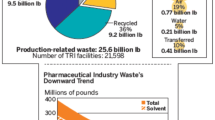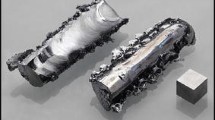Abstract
SINCE the fundamental investigations of Dimroth1, Criegee2, Malaprade3 and Fleury4, lead tetra-acetate and periodic acid as selective oxidants have played an important part in organic chemistry, particularly for the elucidation of the structure of carbohydrates and related compounds and also from the preparative point of view5. It has been found now that red lead (Pb3O4) in many cases can be used successfully instead of the above-mentioned oxidants either in aqueous acetic acid medium or in organic solvents containing anhydrous acetic acid. It may be supposed that, in the presence of acetic acid, red lead gives rise with a limited velocity to intermediate formation of lead tetra-acetate which, in the presence of a suitable hydrogen donor, will be promptly reduced to lead diacetate. Therefore, the reaction mixture never contains an excess of tetra-acetate. Hence red lead can be more generally used for the oxidation of aqueous solutions than lead tetra-acetate itself, as this rapidly hydrolyses in aqueous medium into uneffective lead dioxide.
Similar content being viewed by others
References
Ber., 53, 454 (1920); 54, 3050 (1921); 56, 1375 (1923).
Ber., 64, 260 (1931); Ann. Chem., 507, 159 (1933).
Bull. Soc. Chim. France, 43, 683 (1928).
C.R. Acad. Sci., Paris. 195, 1395 (1932); 196, 1416 (1933); J. Pharm. Chim., (8), 17, 313 (1933); (8), 18, 470 (1933); 21, 247 (1935).
Ann. Rep. Chem. Soc., 43, 180 (1946).
Author information
Authors and Affiliations
Rights and permissions
About this article
Cite this article
VARGHA, L. Red Lead as a Selective Oxidant. Nature 162, 927–928 (1948). https://doi.org/10.1038/162927b0
Issue Date:
DOI: https://doi.org/10.1038/162927b0
- Springer Nature Limited





